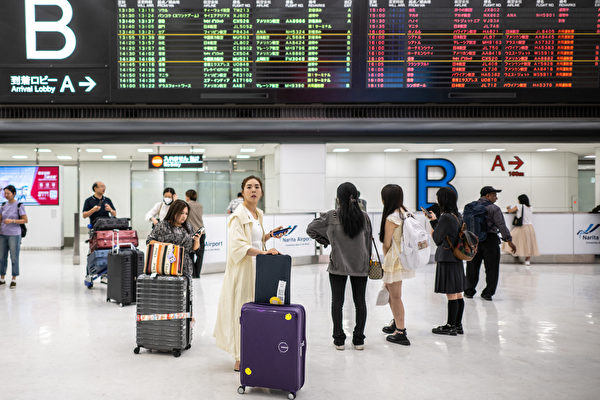The Japanese government has been striving to promote the tourism industry and increase the number of visitors. As part of this effort, they are planning to introduce automatic immigration checks for visa-exempt foreigners arriving at airports, with the hope of enhancing the efficiency of the entry process in the coming years.
According to a report by Nikkei Shimbun on September 15, currently, Japanese nationals only need to pass through automatic gates upon entry, while foreigners have to undergo inspection by immigration officers. Under the new plan, eligible foreigners will no longer need to undergo questioning upon arrival at the airport.
This airport automation process will apply to visitors from countries that have visa-exemption agreements with Japan, accounting for approximately 80% of recent incoming tourists.
The background behind this initiative is the Japanese government’s goal of having 60 million foreign visitors by 2030, more than double the approximately 25 million in 2023. Without changing the current airport entry process, the workload of immigration officers would skyrocket, leading to longer queues for other foreigners entering Japan, such as those with work visas.
The simplified procedure requires foreign tourists to input information such as the purpose of their travel and accommodation details into a dedicated application prior to their trip. The Japanese Immigration Bureau will then pre-approve or reject these entry applications.
Currently, immigration officers at entry ports affix an “entry permit” label on each visitor’s passport after confirming they are not on any blacklist. In contrast, Japanese nationals can simply pass through automated gates utilizing facial recognition technology upon entry.
Japan’s airports plan to install automatic security screening machines around 2030, which will employ facial or fingerprint recognition technology to identify visitors without the need for face-to-face interaction with officers.
Additionally, the Japanese government intends to launch a new entry system called JESTA in 2030, requiring international travelers to apply for travel authorization online before entry. This move by Japan mirrors the United States’ “Electronic System for Travel Authorization” (ESTA), allowing authorities to conduct advanced screening of foreign visitors.
Once JESTA is operational, travelers from 71 visa-exempt countries and regions, including the United States, Canada, and Australia, will be required to use the system to declare personal information. The primary objective of the new system is to prevent visitors from visa-exempt countries and regions from exceeding their permitted stay duration, which ranges from 14 to 90 days.
Under the new entry regulations, travelers must declare their purpose of entry and intended place of stay before departure. Any travelers deemed high-risk may be denied entry and required to obtain an official visa.

